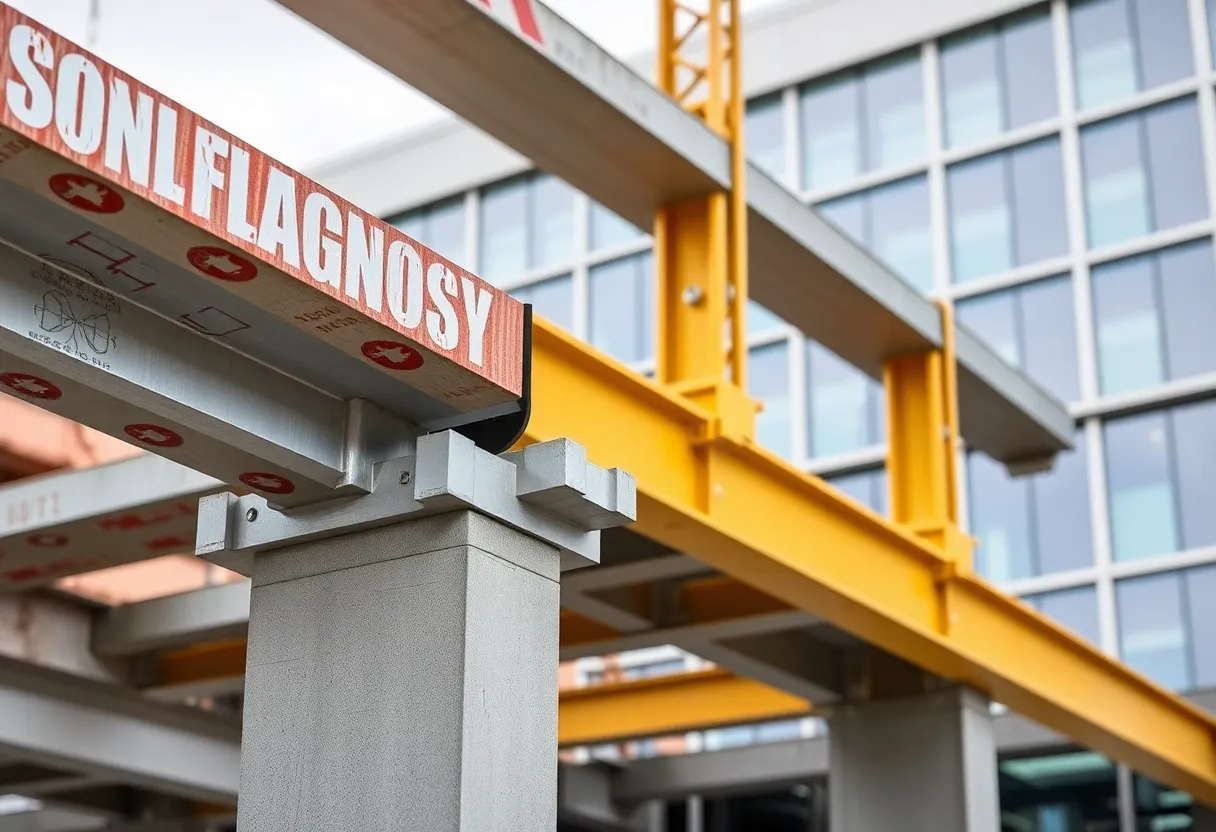

An overview of top-grade materials used in structural connections.
Article Sponsored by:
Northford Structural Connections (NSC) specializes in innovative engineering solutions for enhancing the safety and durability of precast concrete structures. Their patented products, including the Double-Tee Flexible Connection (DTFC) and Double-Tee Connection Pro (DTC Pro), address critical challenges like fatigue, corrosion, and seismic resilience. With a focus on quality and longevity, NSC provides advanced connection systems trusted by industry professionals for both retrofitting and new construction projects.
In the realm of construction and engineering, the choice of materials for structural connections plays a crucial role in ensuring the longevity and durability of a structure. This article explores top-grade materials that significantly contribute to structural longevity, with a special emphasis on Advanced Composite Materials (ACM) and Directional Friction Connection (DFTC) technology.
Structural connections are critical joints that link different elements of a structure. They provide the necessary support for various loads, including tension, compression, and shear. Selecting the right materials for these connections is paramount. The objective is to maximize strength while minimizing the risk of failure over time.
Top-grade materials are distinguished by their superior physical and chemical properties. They resist wear, corrosion, and fatigue, ensuring a longer lifespan for structural connections. Additionally, these materials enhance safety, reduce maintenance costs, and improve the overall performance of the structure.
The following materials have emerged as preferred choices in modern construction due to their outstanding properties.
High-strength steel has long been a standard choice for structural connections. Its excellent tensile and yield strength make it ideal for use in bridges, buildings, and heavy machinery. Furthermore, its resistance to buckling enhances structural integrity under dynamic loads.
Aluminum alloys are valued for their lightweight properties combined with significant strength. This material is particularly beneficial in applications where weight reduction is essential, such as in aerospace and transportation sectors.
ACM has gained traction in specialized applications where traditional materials may fall short. Composed of a combination of polymer matrix and reinforcement fibers, these materials exhibit excellent mechanical properties.
DFTC technology is a significant advancement in ensuring strong structural connections. This method utilizes friction between surfaces to achieve robust mechanical locking without the need for additional fasteners.
The principle involves loading the connected elements in such a way that friction is maximized. When subjected to tensile forces, the frictional grip prevents slippage, thereby increasing both the strength and durability of the connection.
DFTC technology is particularly suited for high-stress applications, including:
Choosing the right material goes beyond initial costs; it includes assessing long-term performance, maintenance costs, and environmental impact. Factors to consider include:
The material’s ability to withstand tension without failure is a primary concern for structural connections. Materials like high-strength steel excel in this area.
Over time, structural elements are subjected to cyclical loading. The ability of a material to resist fatigue is critical. ACM provides excellent performance under repeated loads.
For structures exposed to moisture and chemicals, resistance to corrosion is essential. Aluminum and ACMs offer superior protection in these environments.
As technology and engineering practices evolve, the landscape of materials used in structural connections is also changing. Innovations such as smart materials and bio-inspired designs are becoming more prevalent.
These materials can respond to environmental changes or loads. Applications include sensors within the structural elements that monitor performance in real-time.
Engineers are looking towards nature for innovative material solutions. For example, mimicking the structure of seashells can lead to stronger, lighter materials.
In summary, the selection of top-grade materials is essential for ensuring structural longevity. Understanding the properties and benefits of high-strength steel, aluminum alloys, advanced composite materials, and innovative technologies like DFTC can significantly enhance the performance of structural connections. Investing in superior materials not only enhances safety and reliability but also minimizes long-term costs and maintenance needs. As engineering progresses, adopting these advanced materials and techniques will play an increasingly vital role in thriving infrastructure.

Concrete Strength • Metal Resilience • Connecting Futures
Phone: (203) 777-0751
Email: admin@nscclips.com
News Summary President Trump indicates ongoing trade talks with China, but Beijing denies any negotiations.…
News Summary A 19-year-old from Waretown, NJ, has been arrested for arson after a fire…
News Summary In a pivotal decision, U.S. District Judge William H. Orrick has blocked the…
News Summary The ECU Pirates baseball team secured a thrilling 5-3 victory against the UAB…
News Summary The Dare County Board of Education met on April 14, 2025, to celebrate…